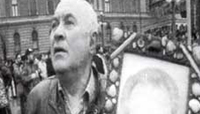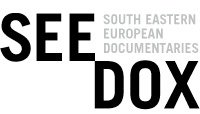Film Profile

Poludeli ljudi / Belgrade follies
Goran Markovic's Belgrade Follies (produced by B92 Video and Film Production) was shot in the weeks following the municipal elections of 17 November 1996, when the government of Slobodan Milosevic attempted to annul the election results by refusing to allow new mayors from Zajedno - the political opposition - to take up their offices. As a result massive demonstrations took place daily for three months on the streets of Belgrade. Brutal police measures were used and the broadcasts of B92 were jammed. Finally, because of internal instability and international pressure, Milosevic accepted the election results and Zoran Djindjic - leader of the Democratic Party, one of the leading parties of the Zajedno coalition - became the new mayor of Belgrade.
The film starts with scenes in the studio of B92, where journalists talk about the jamming and plan their future action. There follow scenes of demonstrations on the streets without any dialogue. The only sound is march-like music which fits in with what is being shown on the screen. Brief commentaries on the background and a record of the demonstrations are given by intertitles. The documentary is undoubtedly very lively and successful in terms of portraying to the audience the climate of turmoil and unrest together with the feeling of enthusiasm and solidarity among the demonstrators. The spectators feel that they are actually there when the demonstrators are bitten by the police dogs or when they clash with the supporters of Milosevic. The original ideas of the demonstrators, the whistles, trumpets, flowers, costumes, the street parties and the street theatre are all shown with humour.
However, the documentary fails to refer to the political aspect of the demonstrations. The role of the Zajedno coalition as leader of the public unrest is not mentioned anywhere. Consequently the idea is presented that these demonstrations were something totally independent and spontaneous. Furthermore, no ideological profile of the demonstrators is given apart from the fact that they are opposed to the illegal annulment of the election results by the Milosevic government. Questions unavoidably arise when in December 1996 the government organises a counter-demonstration, which leads to violent clashes between the two camps. The natural question that comes to mind is whether it is a confrontation of two political fronts - the old Communists and the elements of change. Do the protesters support a change of government alone or do they wish for a broader change in politics, a transition towards a more Western democracy and a market economy? How solid are their political ideas? We are given little information on such hopes and aspirations. Additionally, the documentary fails to inform the audience about the stagnation of political life in Serbia because of the lack of mature opposition leaders who could replace Slobodan Milosevic. As a result of the impotence and opportunism of the opposition, Zajedno split shortly after the end of the popular unrest and opposition leaders started to make mutual accusations of treason and collaboration with the regime. The film, therefore, stands as a spirited picture of resistance, without analysing its idealism or failures.
Source: Maria Vidali: Another truth. Serbian documentaries at the Raindance Film Festival, in: Central Europe Review, Vol. 1, No. 18; 25th Oct., 1999;
http://www.pecina.cz/files/www.ce-review.org/99/18/kinoeye18_vidali.html
Yugoslavia 1997
42 min, colour
DIRECTOR
Goran Marković
SCREENPLAY
Goran Marković
CAMERA
Nikola Majdak
Nenad Mladenović
Nersandar Kustto
EDITOR
Jovana Krstanović
MUSIC
Zoran Simjanović
PRODUCTION
TV B 92, Belgrade
CONTACT
TV B 92, Belgrade



















